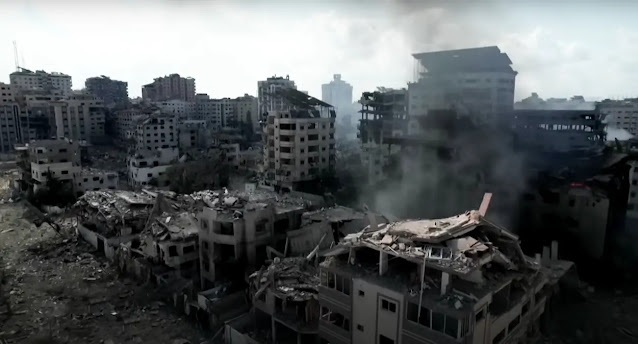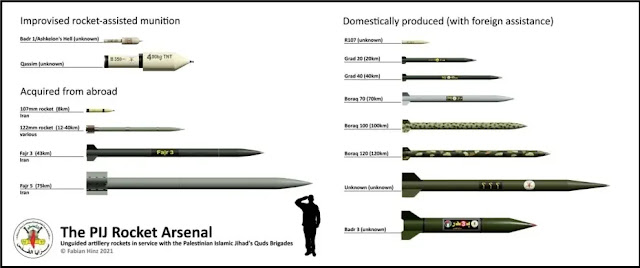Escalating Tensions: Hamas-Israel Conflict Enters New Phase with Regional Implications
Hamas-Israel Conflict Intensifies, Regional Players React
Date: October 16, 2023
In the heart of the turbulent Middle East, the longstanding conflict between Hamas and Israel has taken an alarming turn, with regional players like Iran and Hezbollah entering the fray.with significant implications for regional stability. This blog update delves into the recent events, drawing on statements and actions from various stakeholders, including the Israel Defense Forces (IDF), Hamas, Iran, and Hezbollah.
The Spark: Escalation in Jerusalem
The recent escalation can be traced back to a series of events in Jerusalem, a city that has long been at the center of the Israeli-Palestinian conflict. A key flashpoint was the renewal of tensions surrounding the holy site of Al-Aqsa Mosque, a place of great religious significance for Muslims. This led to protests and confrontations between Palestinian demonstrators and Israeli security forces, and from there, the situation quickly escalated.
IDF's Response: Operation Guardians of Peace
In response to the rocket attacks emanating from the Gaza Strip, the Israel Defense Forces initiated "Operation Guardians of Peace." The IDF stated that the operation aims to target Hamas military infrastructure, specifically focusing on underground tunnels and rocket launchers used by the militant group. The Israeli government has emphasized that its actions are in self-defense against indiscriminate rocket fire.
The IDF spokesperson, Brigadier General Hidai Zilberman, stated, "We will continue to operate forcefully and decisively to protect our citizens. Our goal is to restore long-term peace to the people of Israel."
Hamas Rockets and Iran's Influence
Hamas, the Palestinian militant organization controlling the Gaza Strip, has been firing a barrage of rockets into southern Israel, including Tel Aviv. The group claims that these rocket attacks are a response to Israeli aggression in Jerusalem and the West Bank.
Gaza Under Siege
Iran, a longtime supporter of Hamas, has condemned Israel's actions and has reportedly provided financial and military assistance to the group. While Iran denies having direct control over Hamas, the Israeli government has long accused Iran of being a destabilizing force in the region.
Data ;Courtesy Gaza Health Ministry
Hezbollah's Involvement
In a concerning development, Hezbollah, the Lebanon-based Shiite militant group backed by Iran, has declared solidarity with Hamas. Hezbollah's leader, Hassan Nasrallah, stated that the group stands "side by side with the Palestinian resistance." This rhetoric raises the specter of potential cross-border attacks on Israel from Lebanon, which could further exacerbate the regional conflict.
International Concerns and Calls for De-Escalation
The international community has expressed deep concern over the situation, with many countries and organizations calling for an immediate ceasefire. The United Nations, the United States, the European Union, and regional actors like Egypt and Qatar have all been actively involved in diplomatic efforts to mediate between Israel and Hamas.
The situation remains fluid, with hopes for a de-escalation in the coming days. The conflict's ramifications extend far beyond the immediate vicinity, threatening to destabilize an already volatile region.
As this situation evolves, the world watches with bated breath, hoping for a swift resolution to this dangerous escalation. The consequences of this conflict have the potential to reshape the dynamics in the Middle East, impacting not only the Israeli-Palestinian struggle but also the broader regional power balance.
Please note that the situation is continuously evolving, and the information provided here is based on events and statements up to October 16, 2023.
Given that Egypt has sealed or virtually destroyed the tunnels connecting Gaza to the Sinai Peninsula, how has Iran supplied Palestinians with rockets and other weapons?
Image Courtesy; IDF Israel Defense Forces
The transfer of rockets and other weapons to Palestinian groups in the Gaza Strip, such as Hamas and Islamic Jihad, has been a topic of significant concern and debate for many years. While the details of these transfers can be complex and are not always made public, there are several methods and factors to consider in understanding how these weapons make their way into Gaza, even with Egypt's efforts to destroy or seal tunnels connecting Gaza to the Sinai Peninsula.
Smuggling through Tunnels:
Despite Egyptian efforts to destroy or seal tunnels, not all of them have been completely eliminated. Smuggling tunnels have been a traditional means for the transfer of goods, including weapons, into the Gaza Strip. Some tunnels are dug deep underground and are difficult to detect. These tunnels can facilitate the movement of rockets and other weapons. Smugglers often use a network of underground passages and concealed entrances to avoid detection.
Seaborne Smuggling:
Weapons can also be transported to Gaza via the Mediterranean Sea. Palestinian groups have been known to use small boats and fishing vessels to smuggle weapons and other contraband into Gaza. These vessels can land on the Gaza coastline, bypassing the land-based security measures. The Israeli navy has intercepted several such shipments over the years.
Air Drops:
While less common, there have been instances of weapons being airdropped into Gaza. This method typically involves airdrops from aircraft or drones controlled by sympathetic parties or foreign supporters. These drops may include smaller arms and ammunition, but not necessarily larger rockets due to their size and weight.
Home Production:
Palestinian militant groups have developed rudimentary rocket manufacturing capabilities within Gaza. They produce their own rockets, often referred to as "Qassam" or "Grad" rockets, using locally available materials and technology. While these rockets are not as advanced as those obtained from external sources, they are still a significant security concern for Israel.
Cross-Border Cooperation:
There have been allegations of cross-border cooperation with neighboring countries and militant groups. Weapons can be transferred from other countries to Gaza through intermediary states or groups. This method can involve complex and covert supply chains.
Underground Trade Networks:
Smuggling networks and criminal organizations have also played a role in facilitating the movement of weapons into Gaza. These networks are often well-established, making it challenging for authorities to disrupt their operations entirely.
Image Courtesy; Fabian Hinz
Reverse Engineering:
In some cases, weapons have been reverse-engineered or locally modified to produce similar systems within Gaza. This approach allows for the production of indigenous rockets and other armaments, reducing the dependency on external sources.
It's important to note that Egypt has made significant efforts to counter smuggling and security threats emanating from the Sinai Peninsula. They have destroyed many tunnels and implemented strict security measures along the border with Gaza. However, despite these efforts, the flow of weapons into Gaza has not been completely curtailed.
The international community has been working to address the issue of weapon smuggling into Gaza, emphasizing the need for a peaceful resolution to the Israeli-Palestinian conflict and a comprehensive ceasefire. Additionally, regional actors, including Egypt and Israel, have a vested interest in maintaining border security and preventing weapons from reaching Palestinian militant groups in Gaza. Nevertheless, the complex and dynamic nature of the situation means that this issue remains a challenge for all involved parties.
Keep up with GNOSIS 29 for the most recent information and other world news and reviews in general.









.png)


.webp)
Comments
Post a Comment